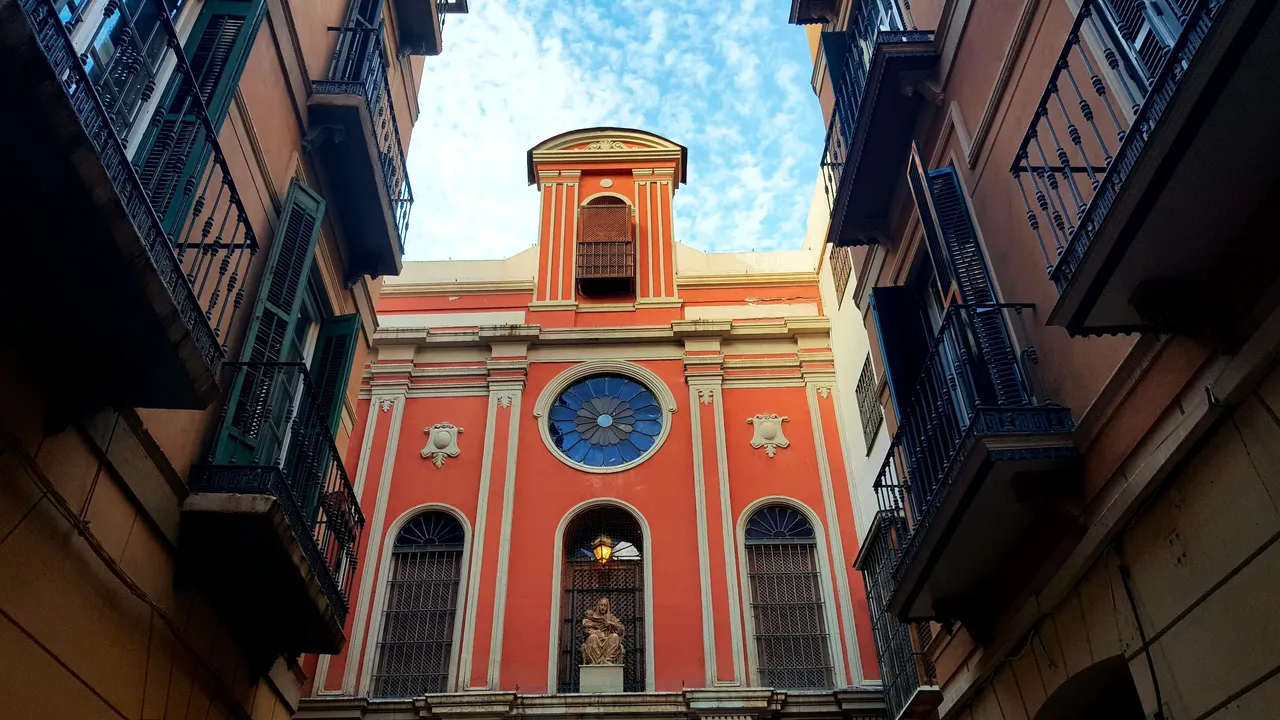
Walking through the historic city centre and looking at the map on my phone I discover that in a small street there is a church or what I thought was a church. From its name, Santa Ana Abbey, I assumed it would be a big church, but it was not.
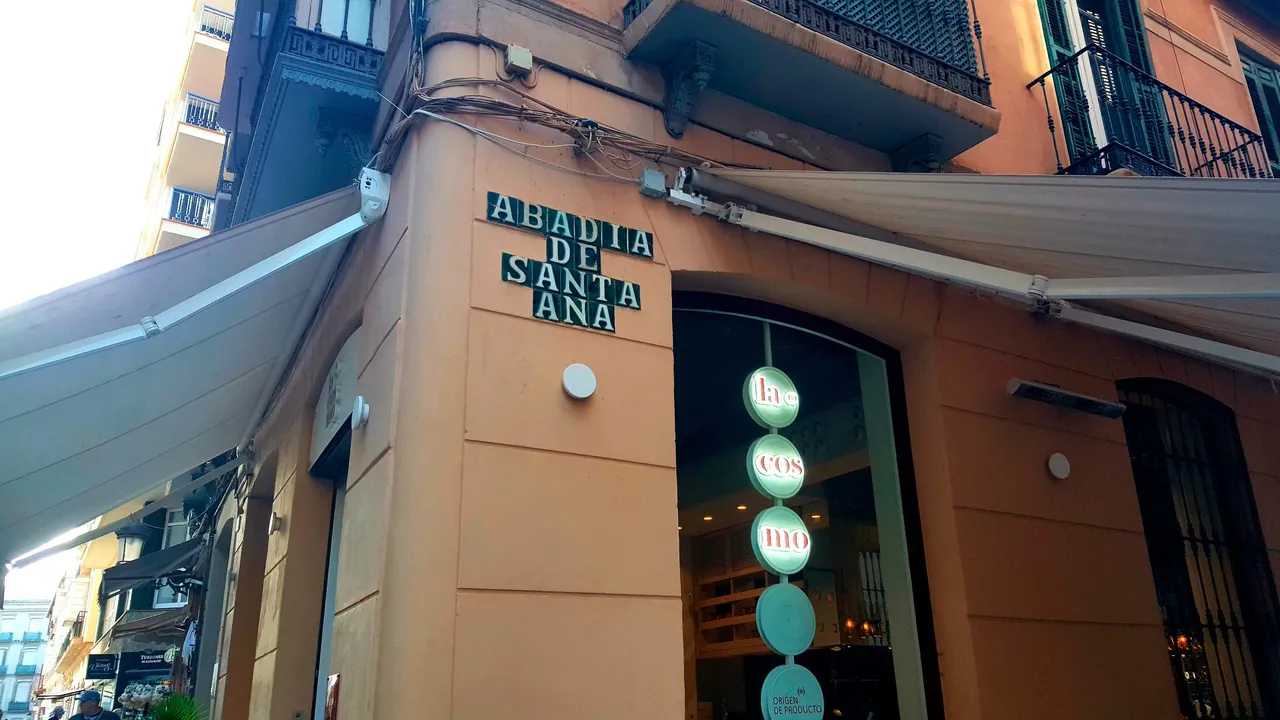

When I reach the street Santa Ana Abbey, called the same as the church, I find that at the end of that small street is its exterior façade.
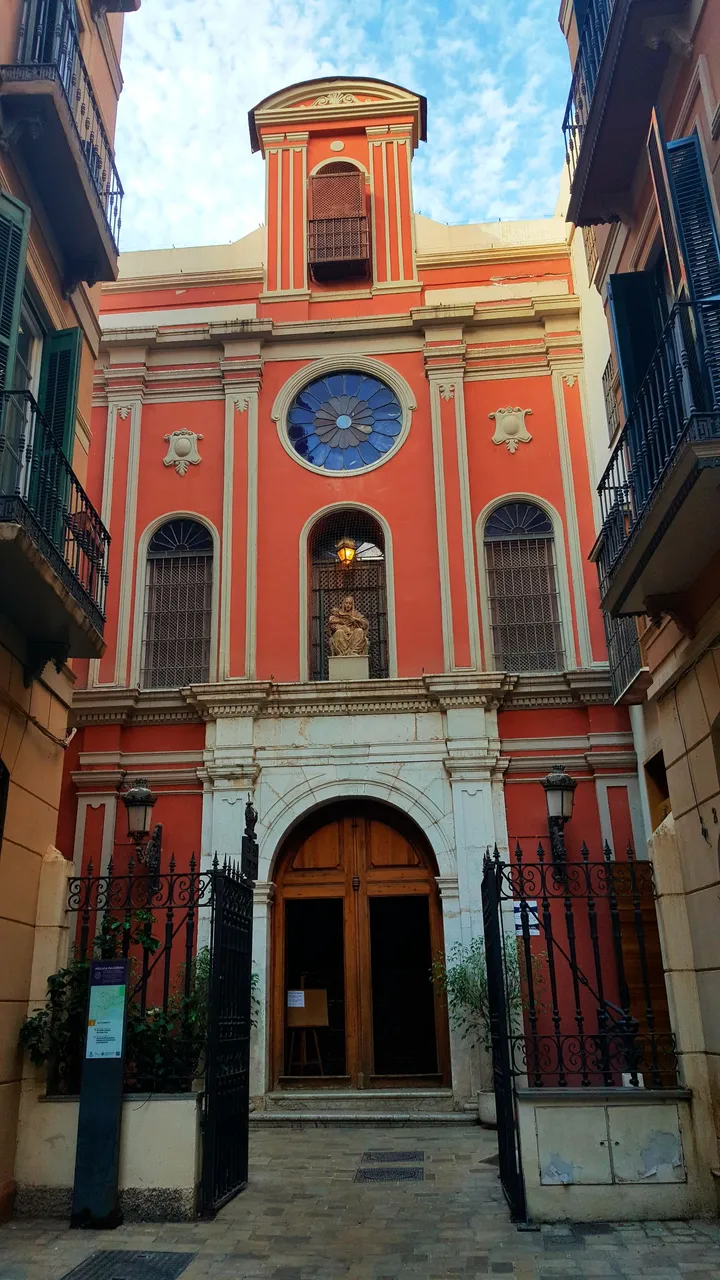

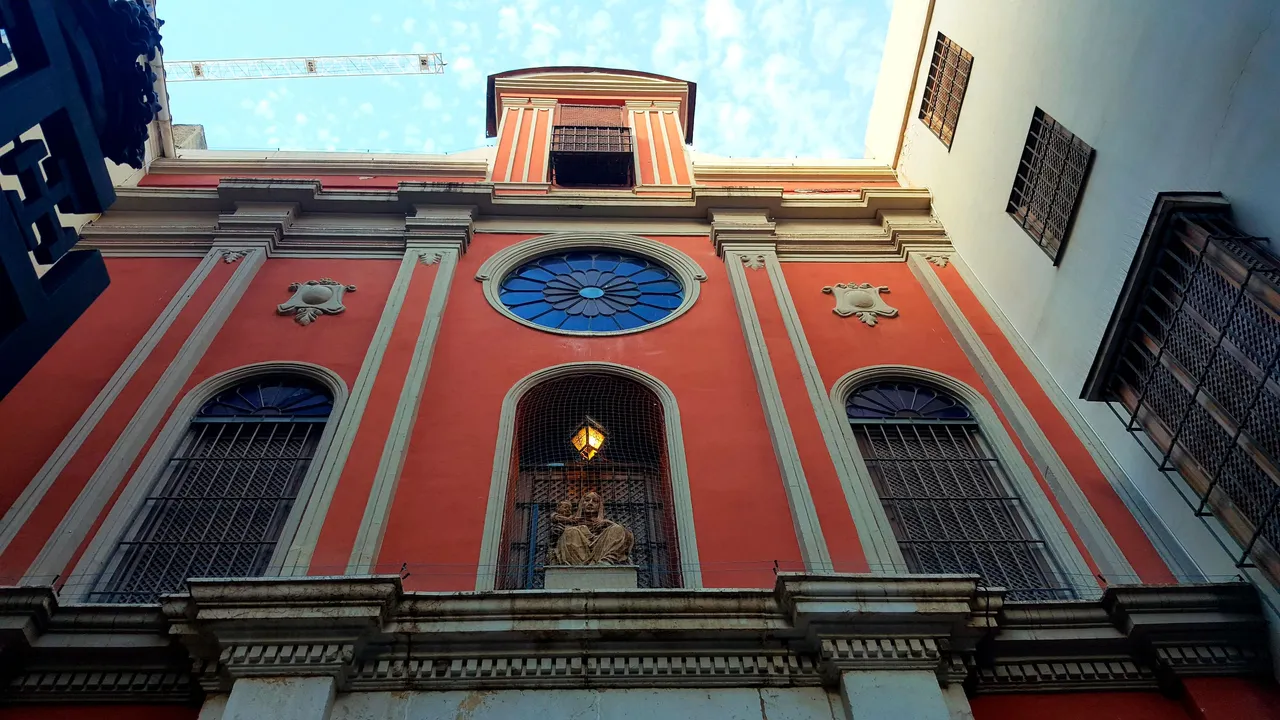
Tall, imposing, but enclosed among other buildings. It was no less beautiful and striking, especially because of a statue of St. Anne from the 18th century and a beautiful circular stained glass window at the top.
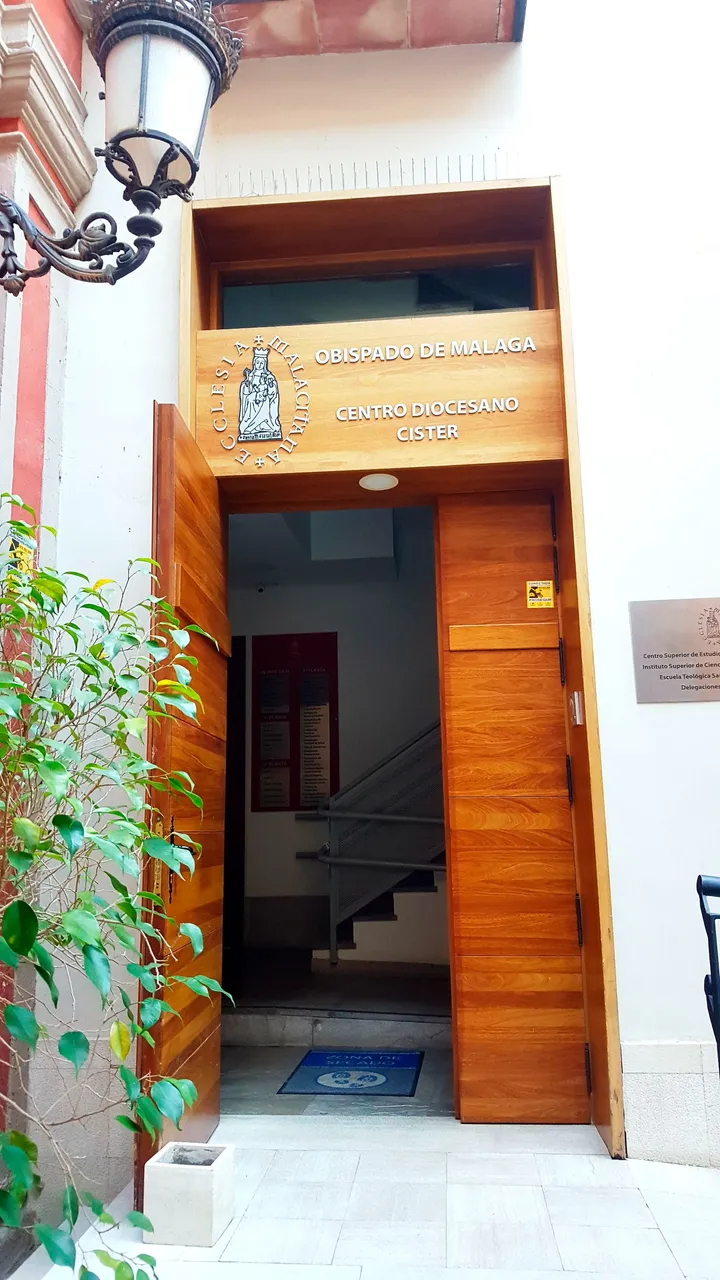 | 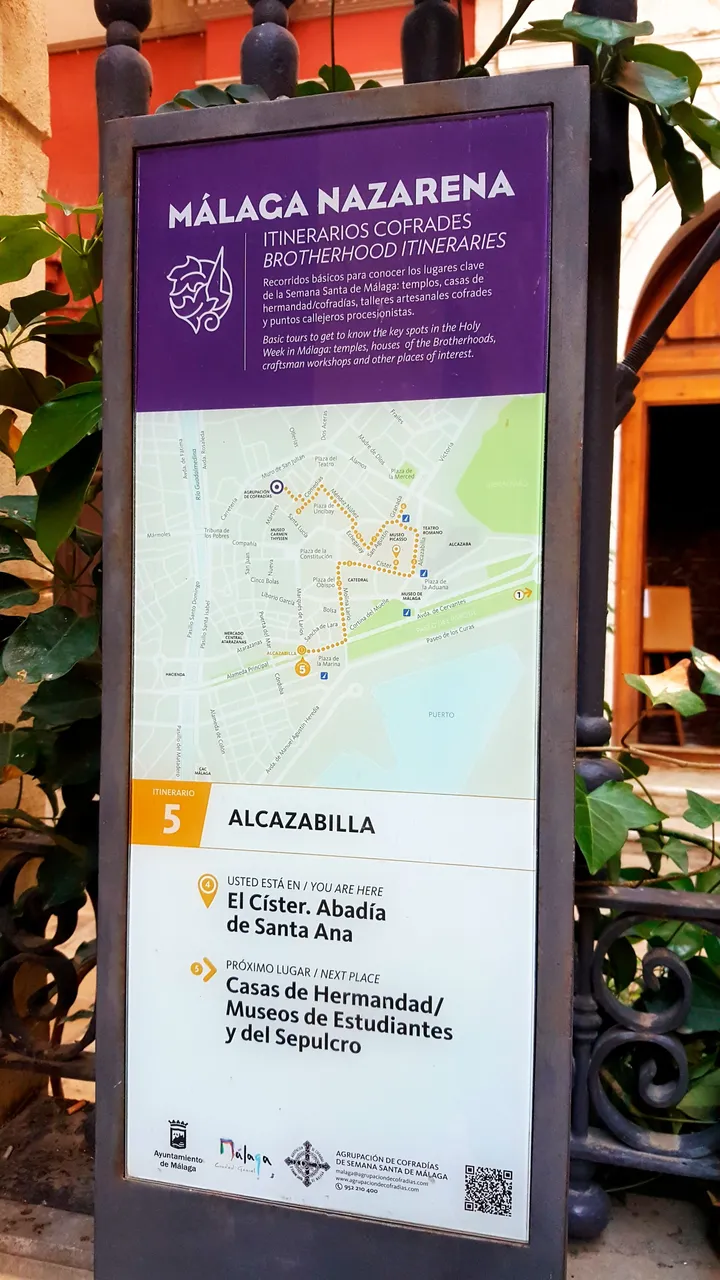 | 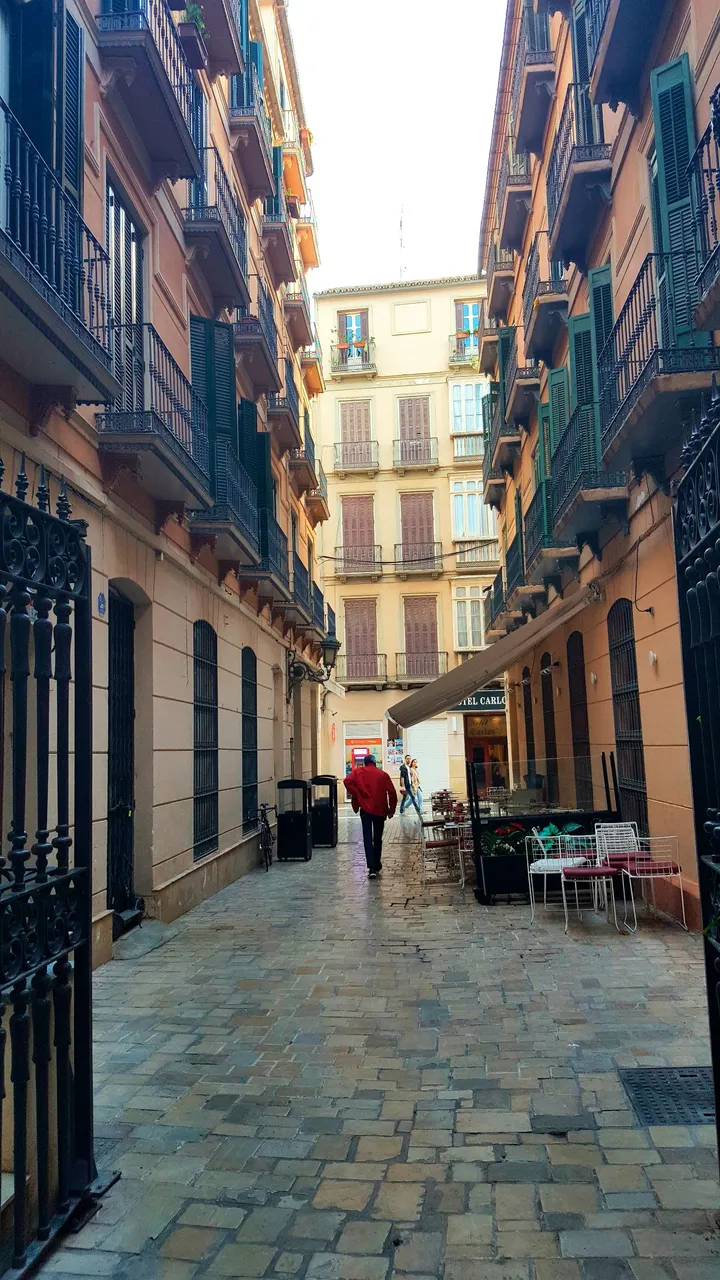 |
|---|
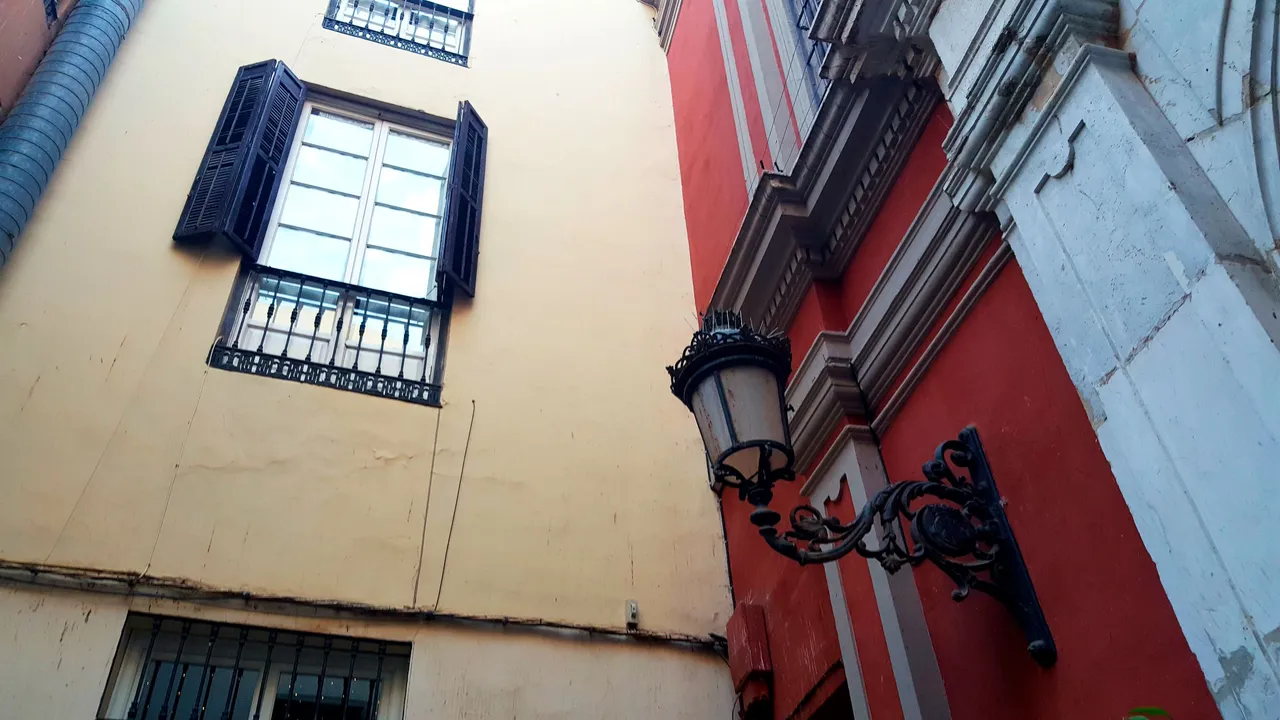
In the small entrance courtyard, there is also a door leading to the offices of the bishopric of Malaga.
This abbey is also known as the Cister Abbey, which is why the perpendicular street is called that way.
Its exterior façade is simple but beautiful and the carved wooden door in a style that although I have seen before in other churches, it never ceases to amaze me.
The construction of the Abbey dates back to 1878 and it has been restored several times in order to keep it in good condition. Its builder was Jerónimo Cuervo.
Although that is the year it was built on the site where it is located at the moment, this abbey has its origins much further back in time, in the 15th century inside the Convent of Jesus and Mary, near the Church of San Juan.
There used to be a convent here, but it was closed in 2009.
This building, as I said, underwent several restorations, as in 1990, Roman remains were found underneath and it used to have a large collection of sacred art, which, due to the transfer of the abbey and its remodelling, had to be removed for the time being.
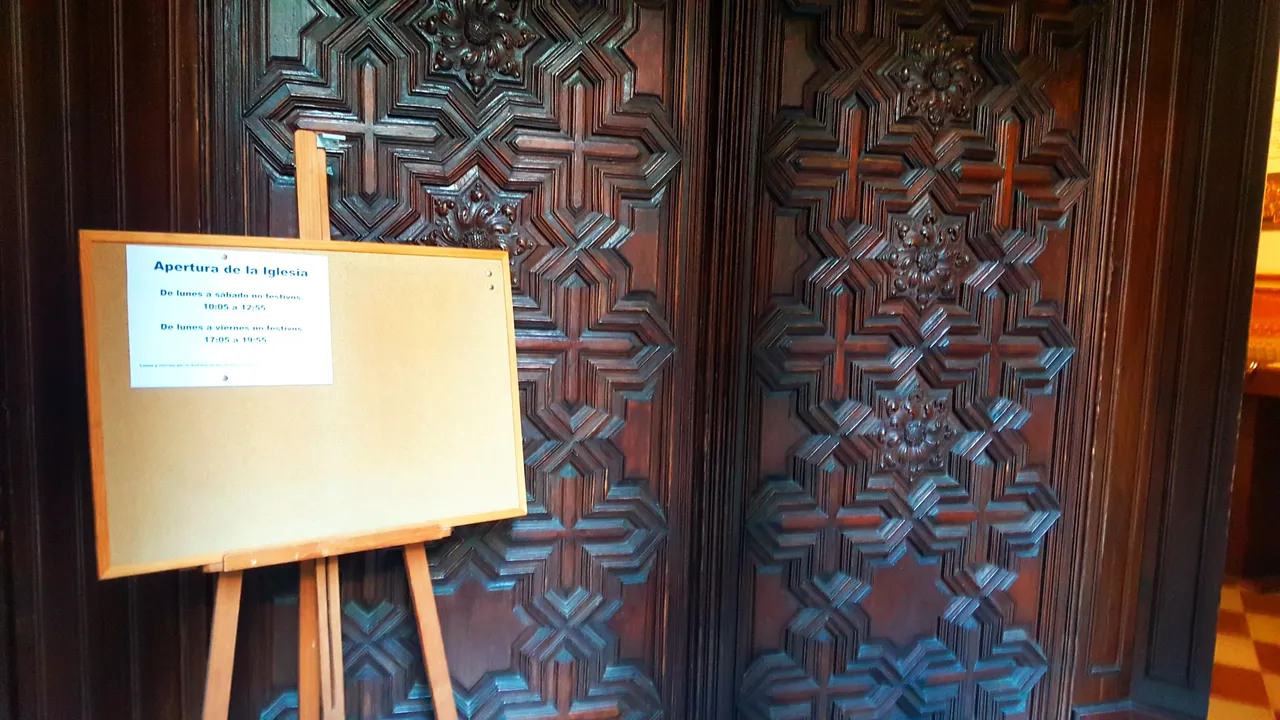
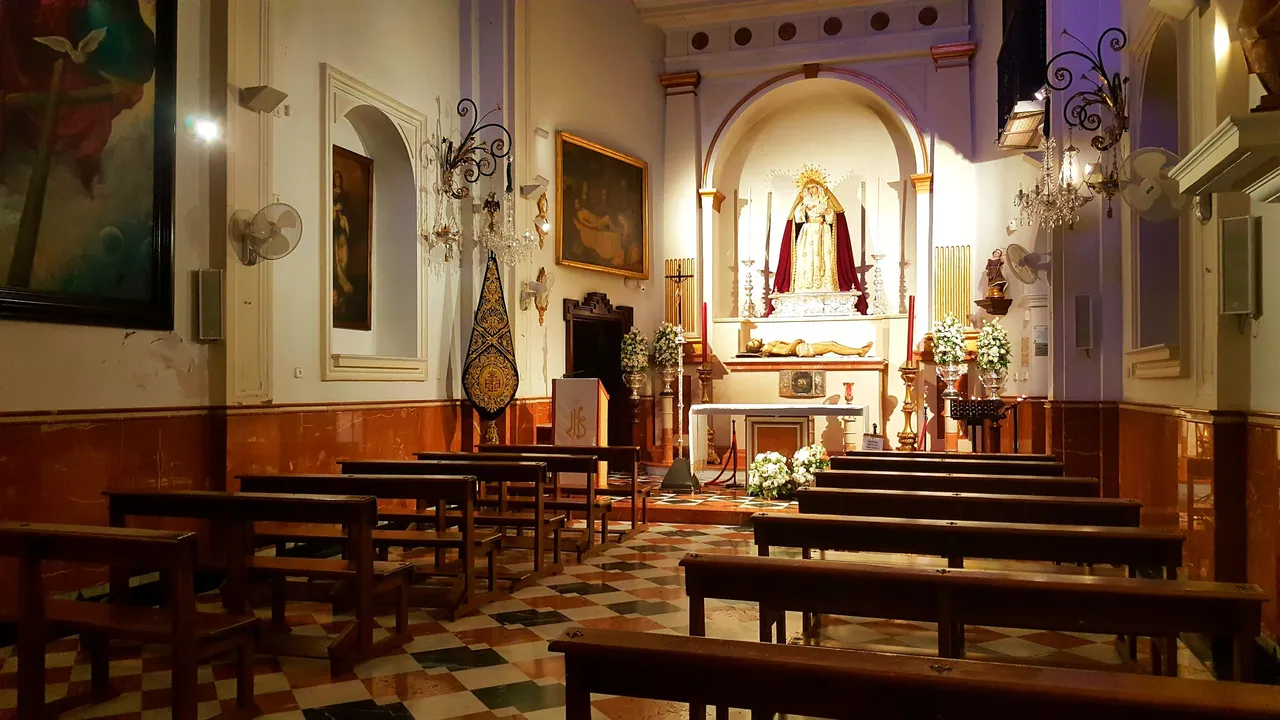
On entering I realise that the church was not as big as I thought, but still beautiful and simple.
It shows some of the sacred art mentioned above and some sculptures.


We can find some references on different plaques about pictures of the images in processions as well as information about this beautiful abbey.
The highlight of the interior is the brightly lit altar with the huge image of the Virgin Mary and Christ lying at her feet.
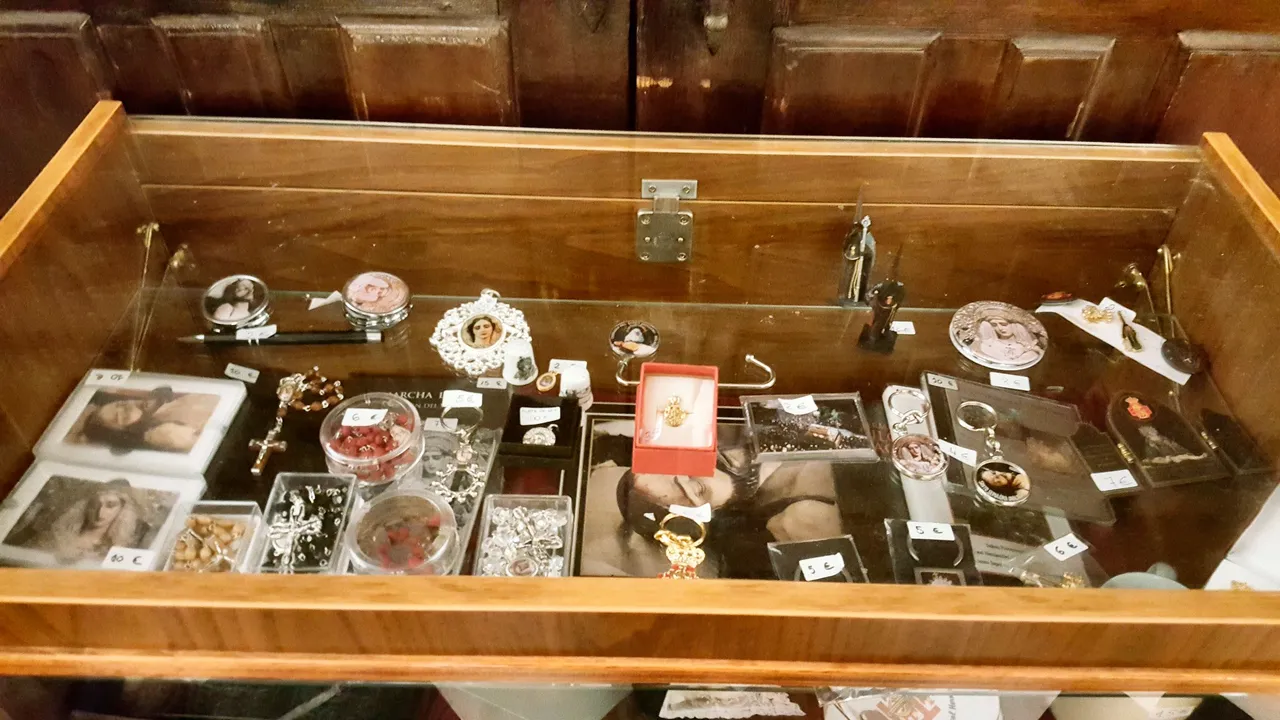
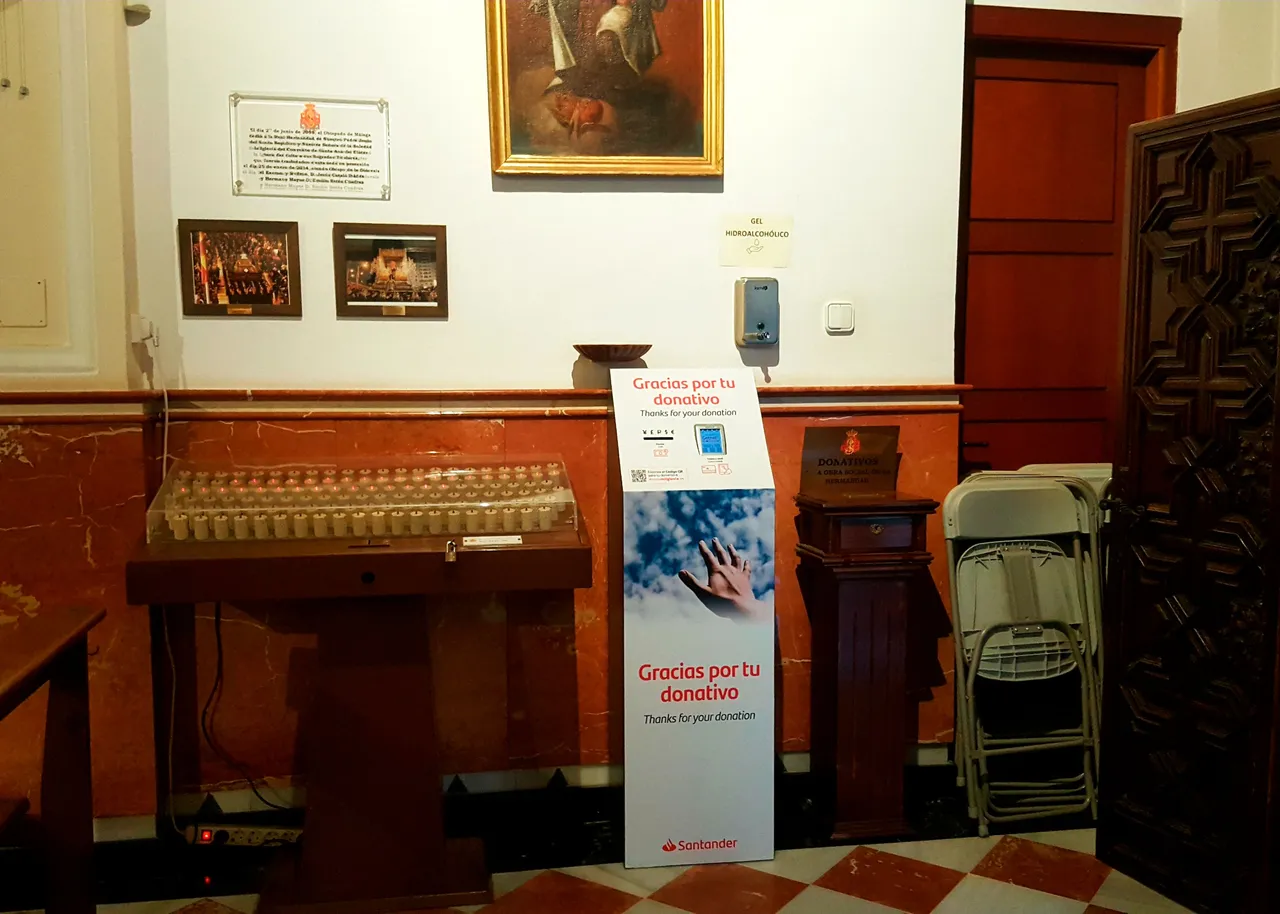
There is also a small shop with different objects that are sold as souvenirs for tourists or people passing by. There is also a small space for donations.
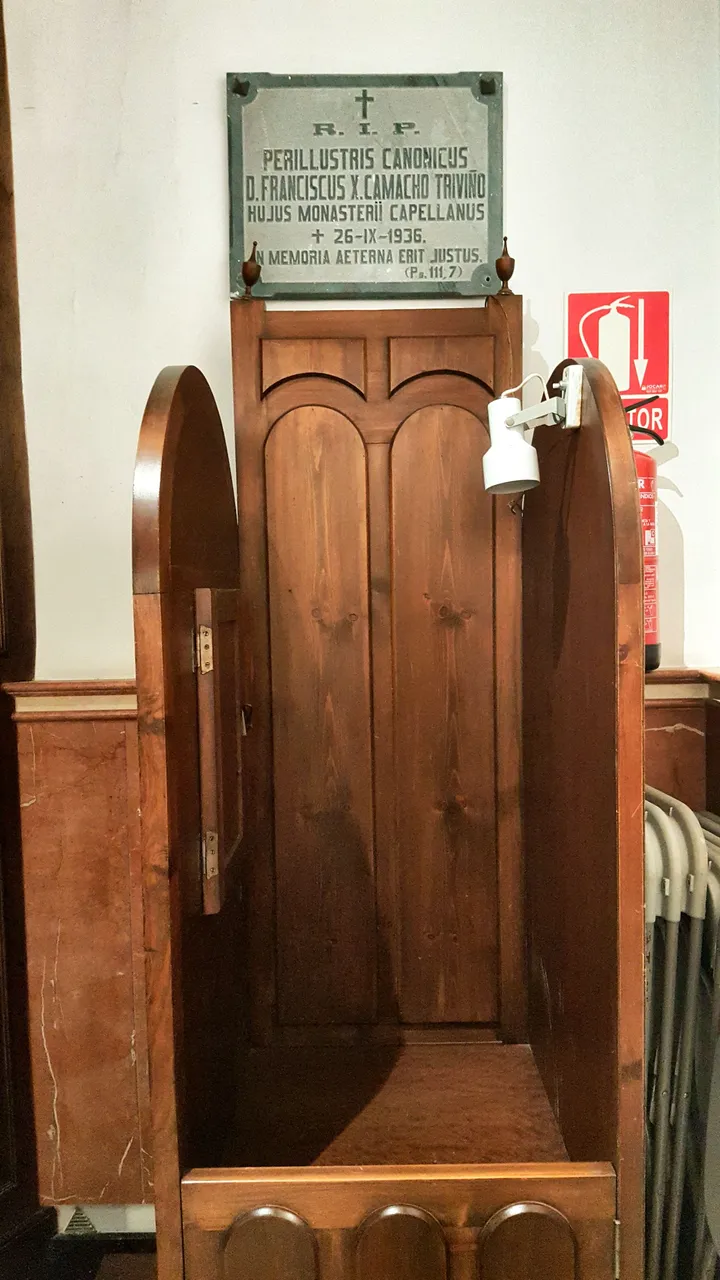
On the opposite side there is an old confessional.
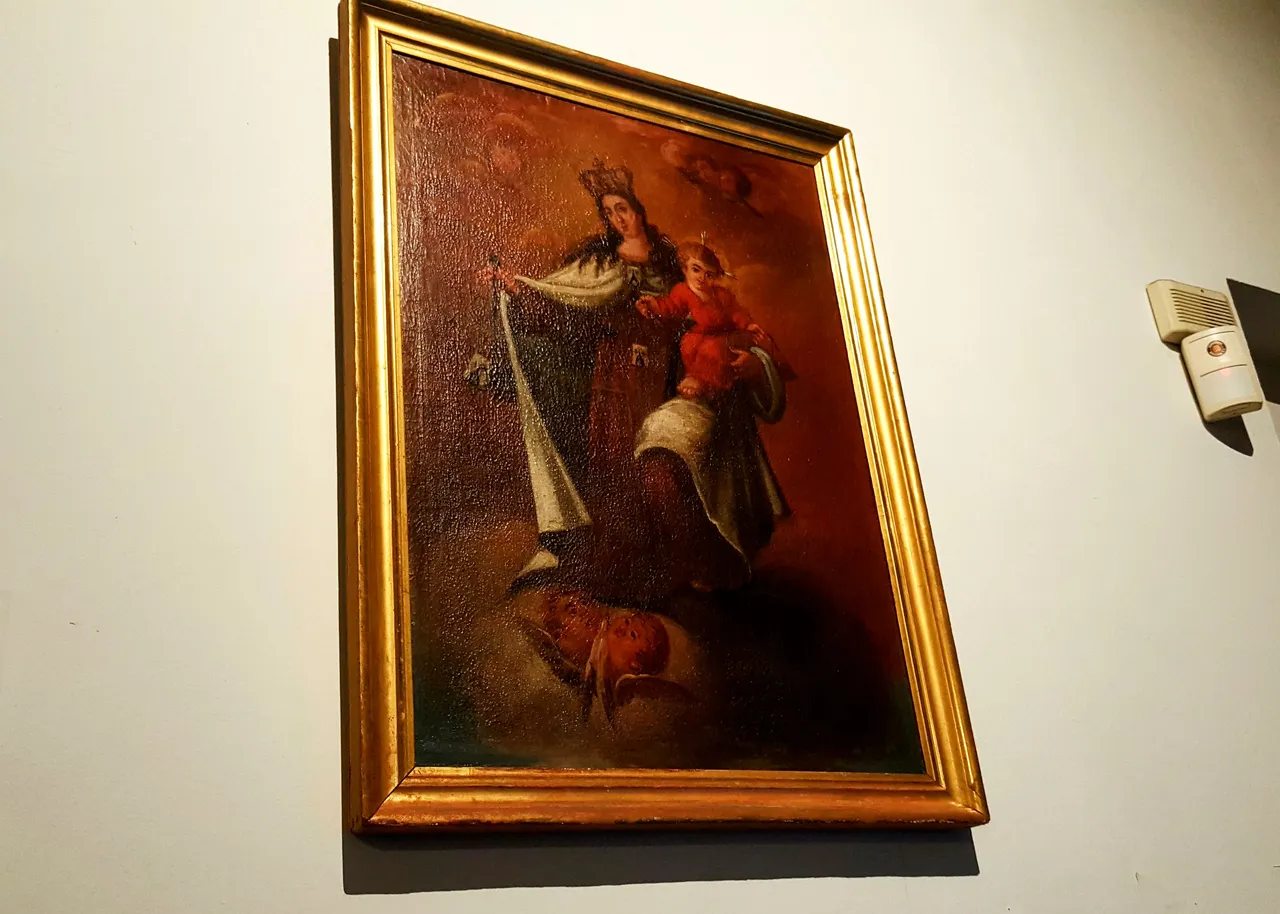
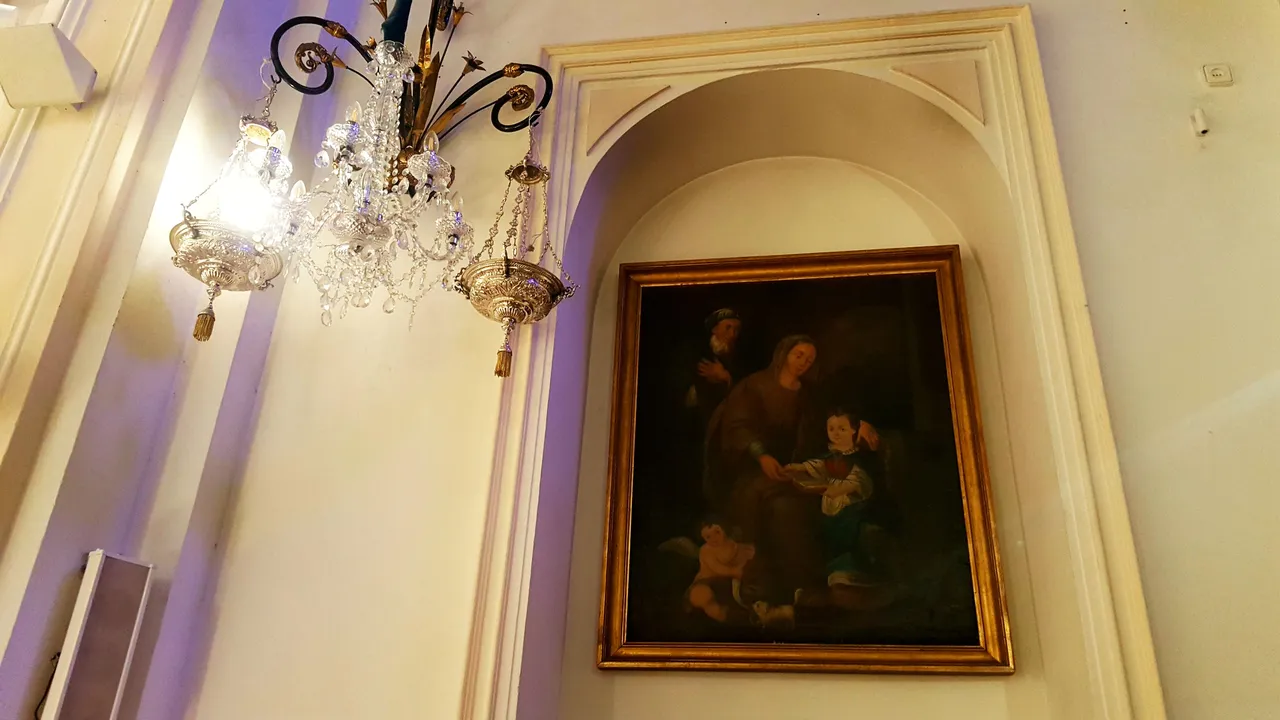
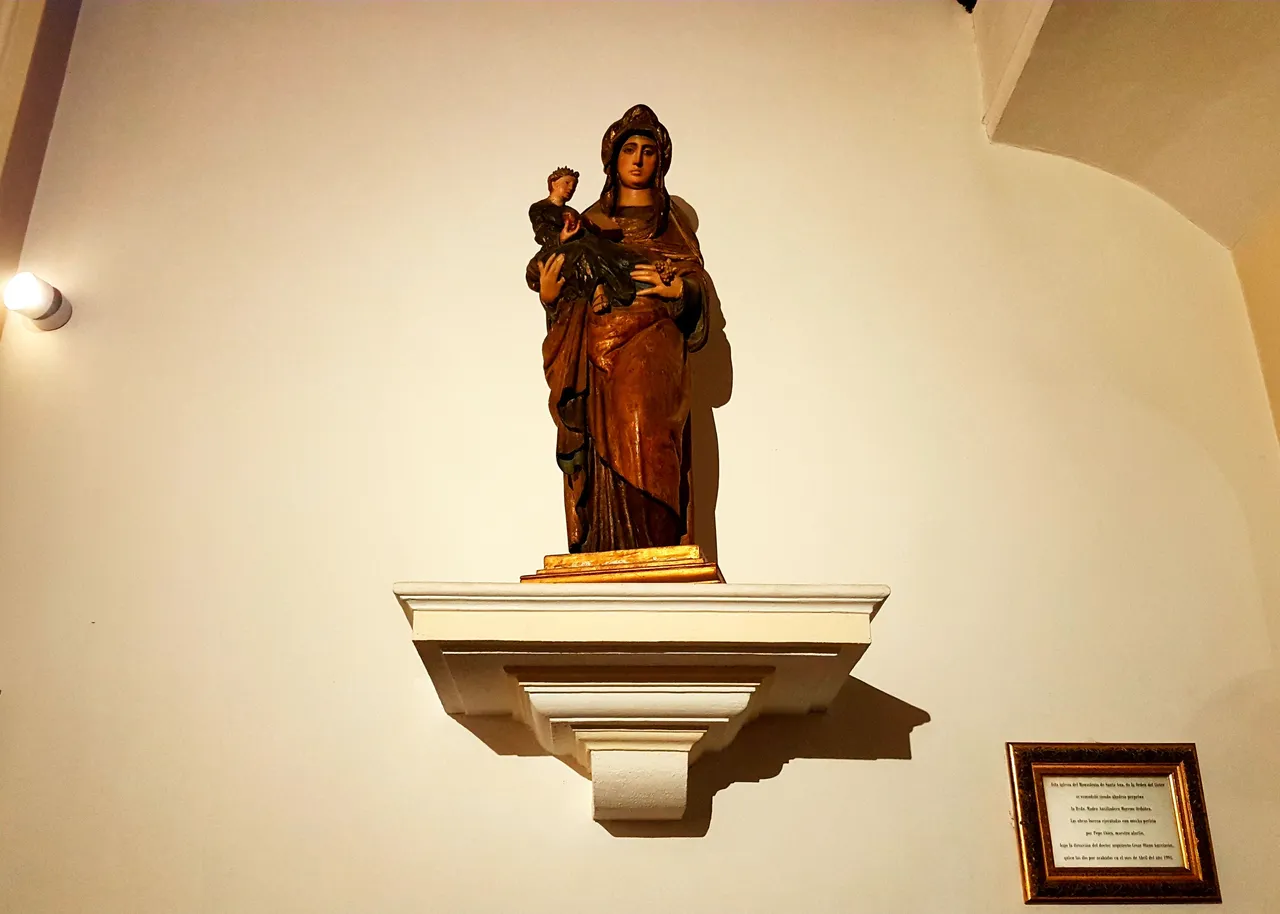
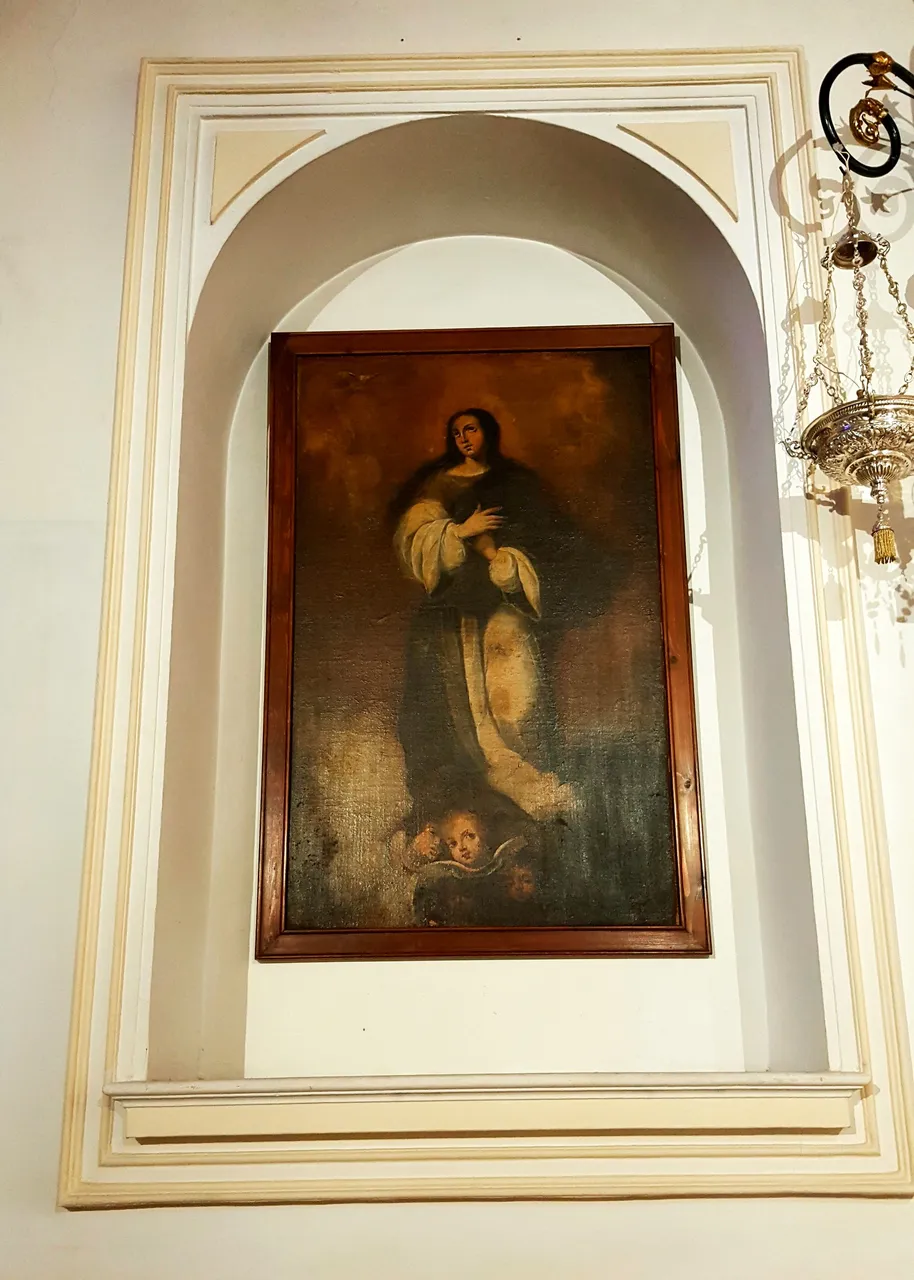
Although the works of art are few in number, they are visible and very well maintained in spite of so many years.
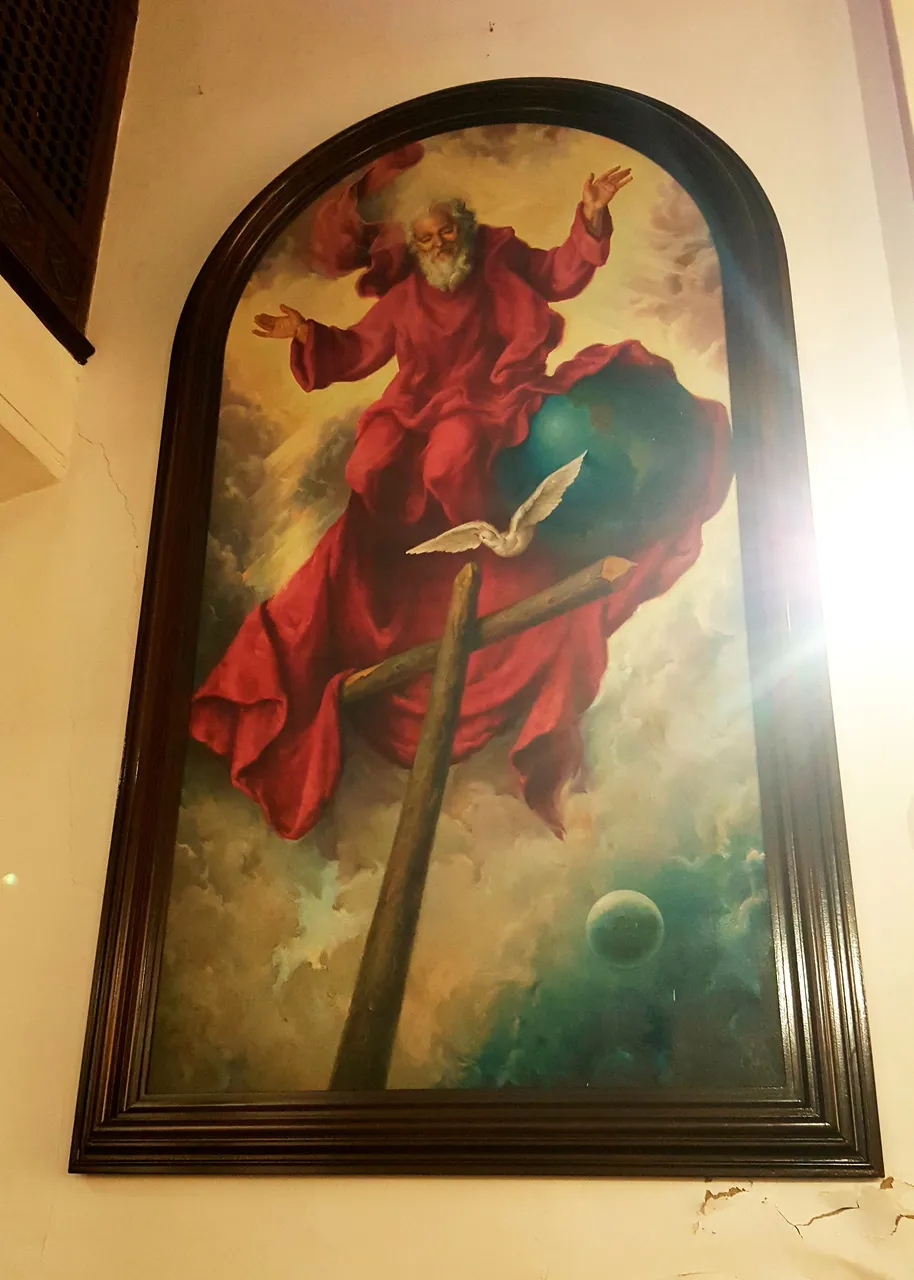
This work caught my attention because of its size, practically occupying the entire altar from the white area of the wall, and it is very well executed.
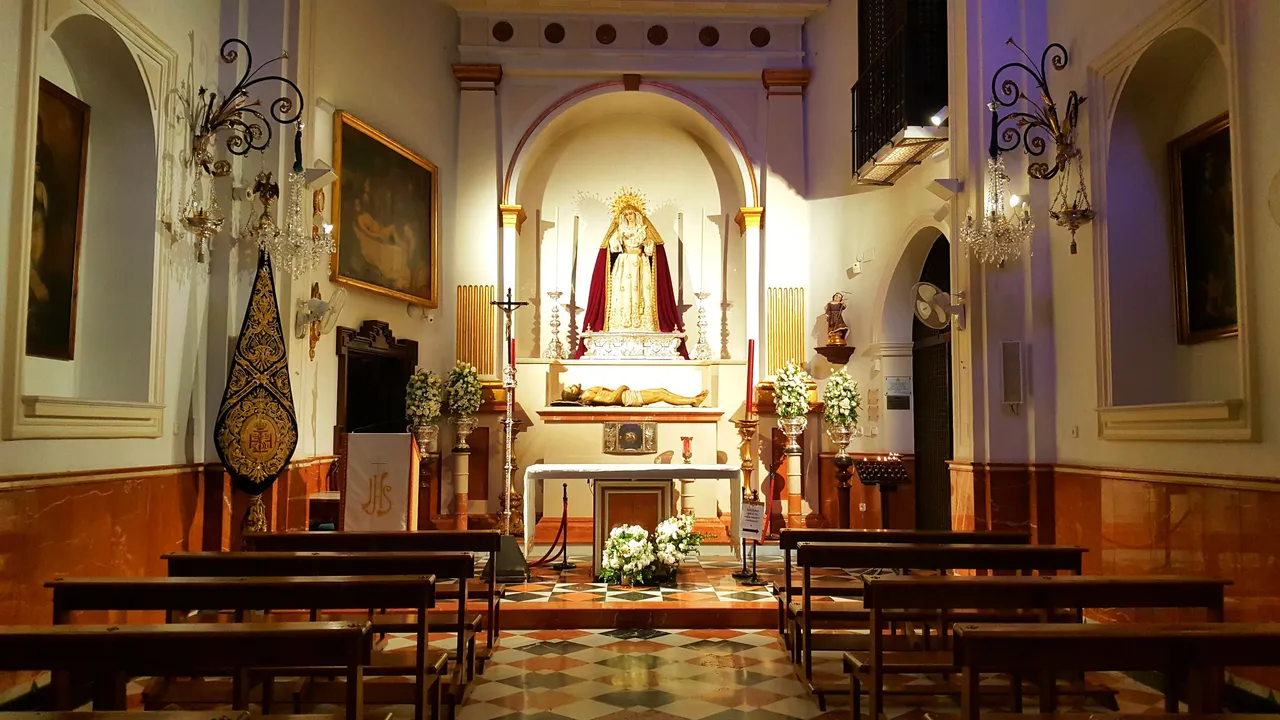
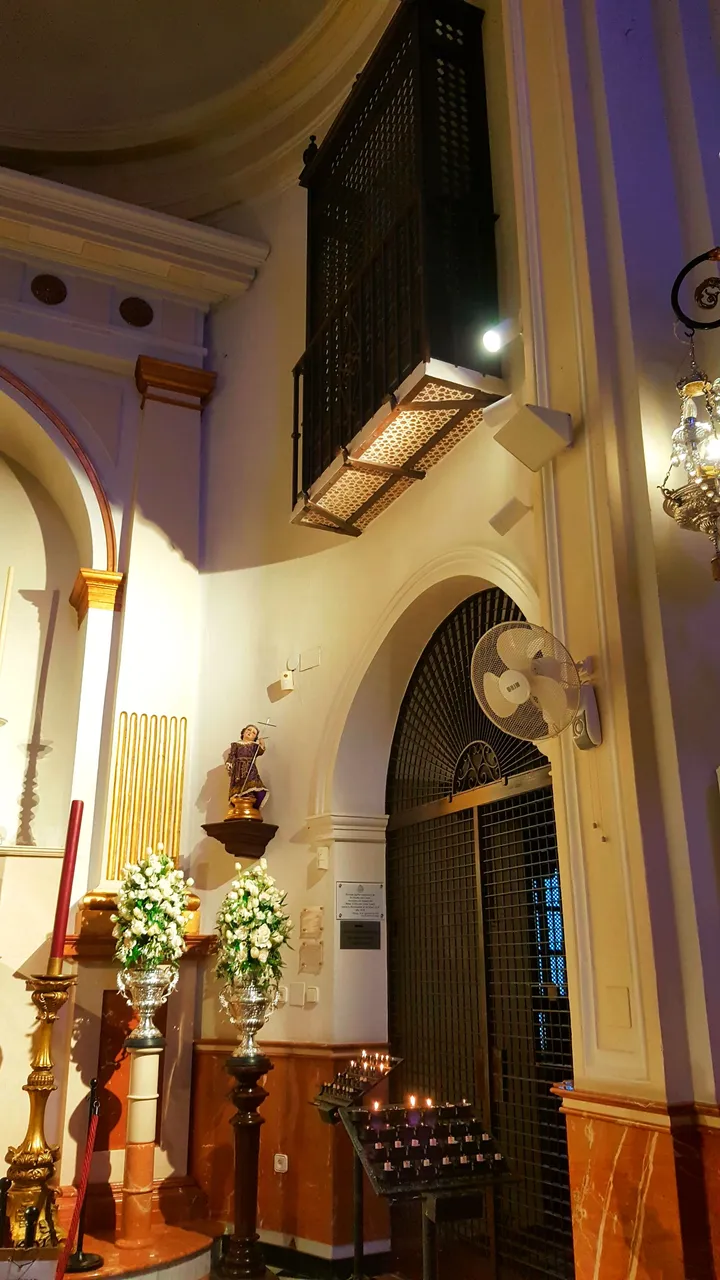 |  | 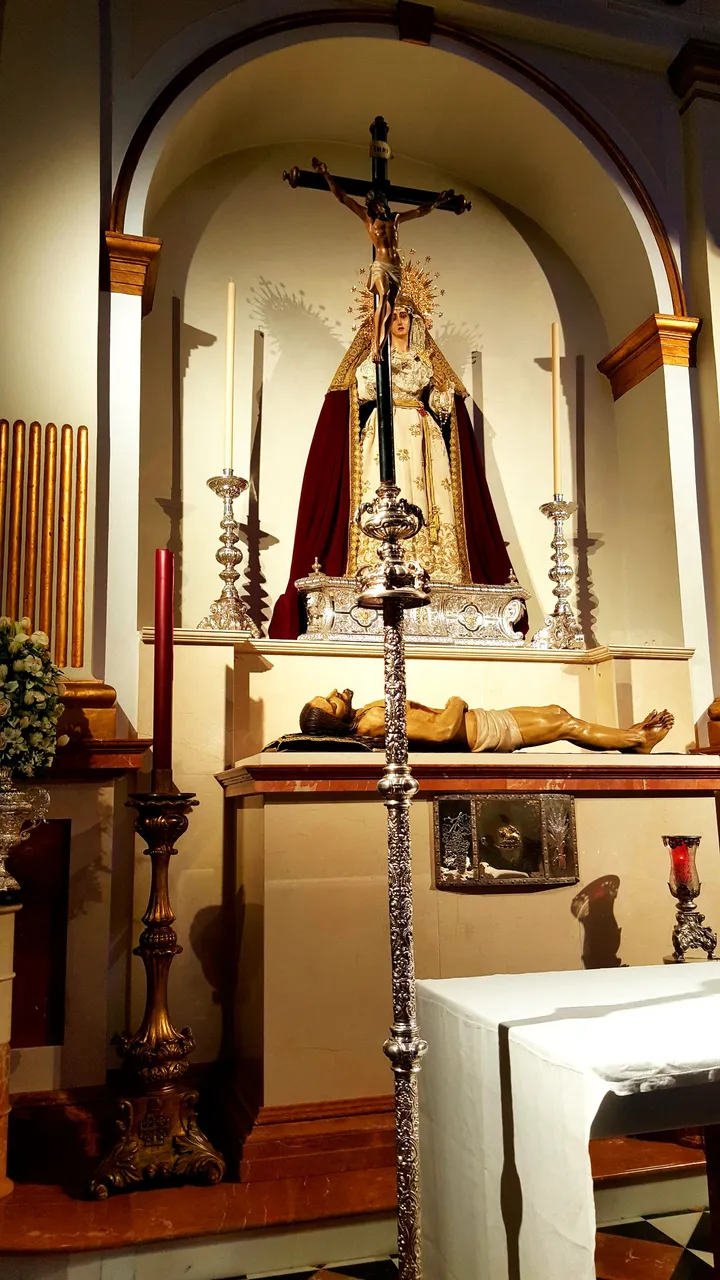 |
|---|
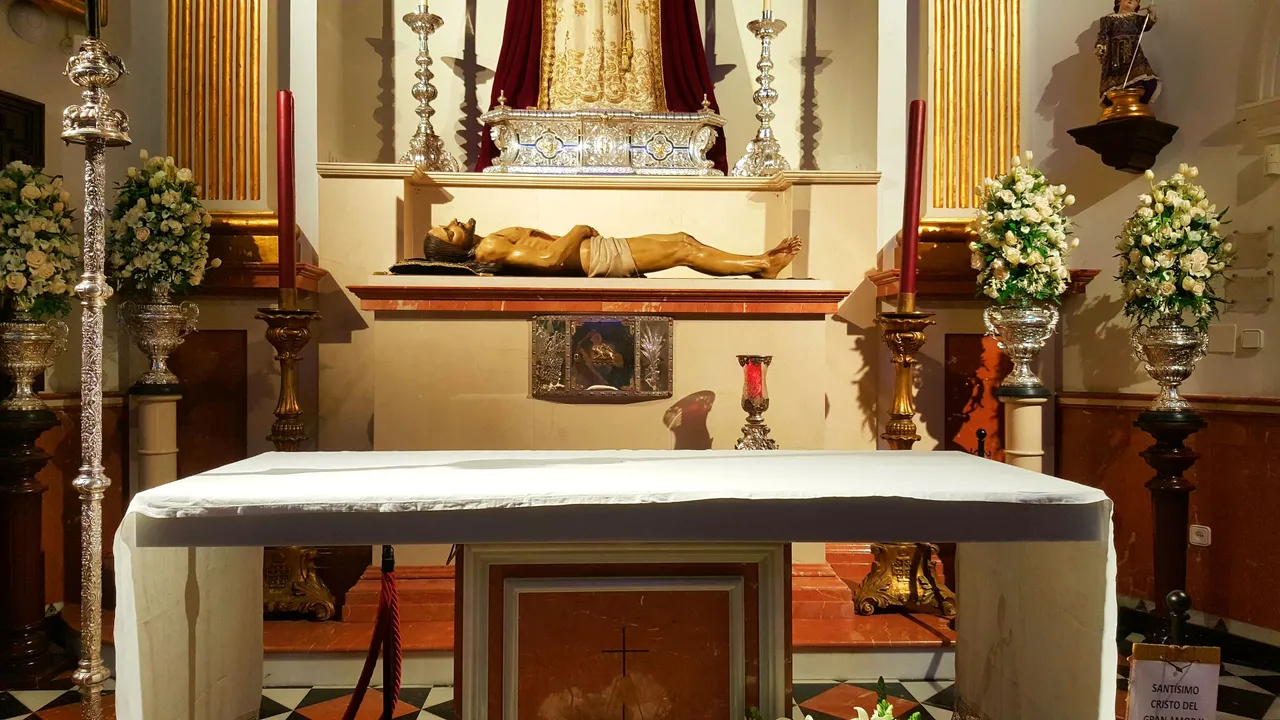
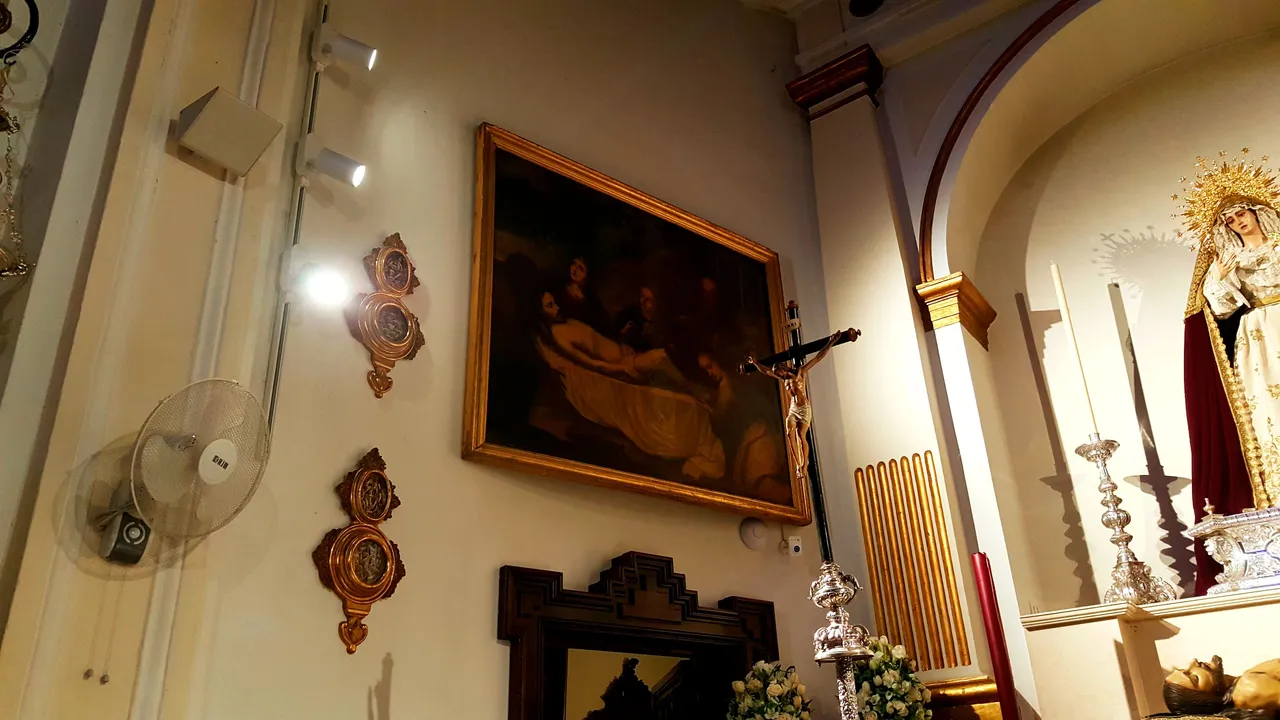

As I get closer to the altar I can appreciate it much better and the details around it, symbols, works of art, candelabras and lamps.
The lighting in this place clearly shows the works of art, which are quite dark, but without damaging them, and the details of the altar, which is also simple.
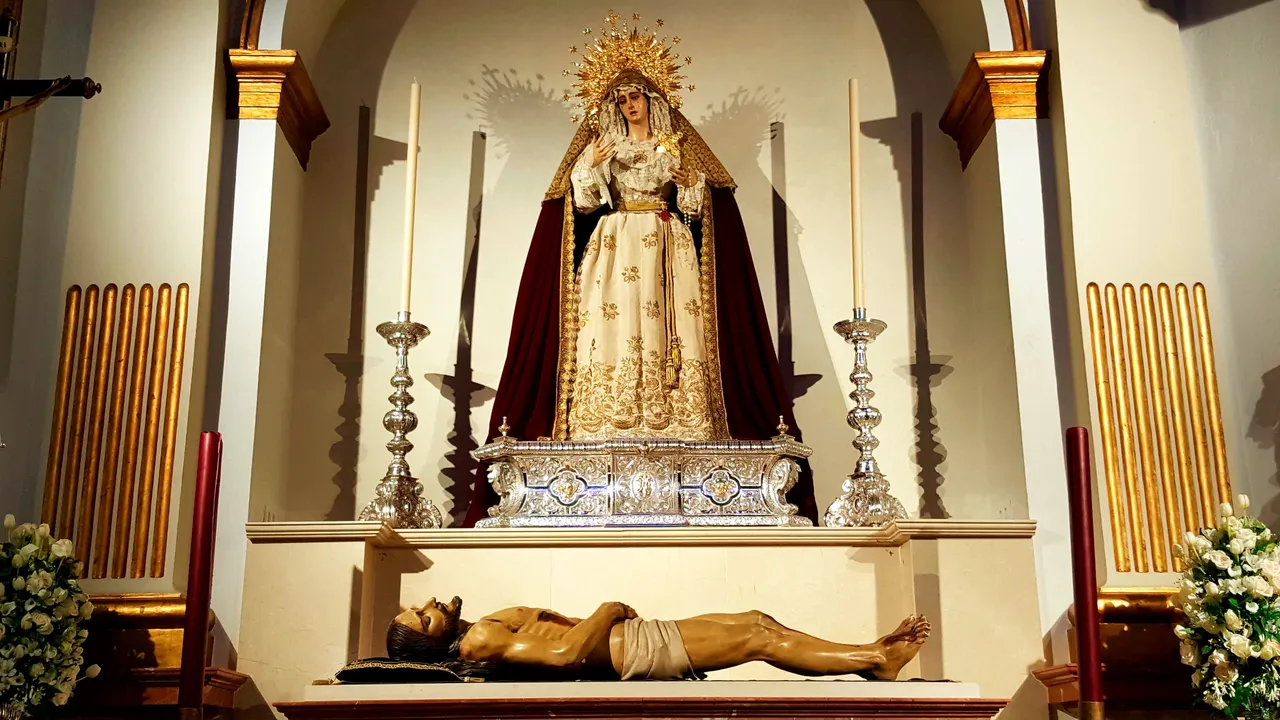
The image of the Virgin is very large and the gestures of her face and her affliction are striking. On the other hand, the Christ at her feet is reminiscent of when he was taken down from the cross, already dead.
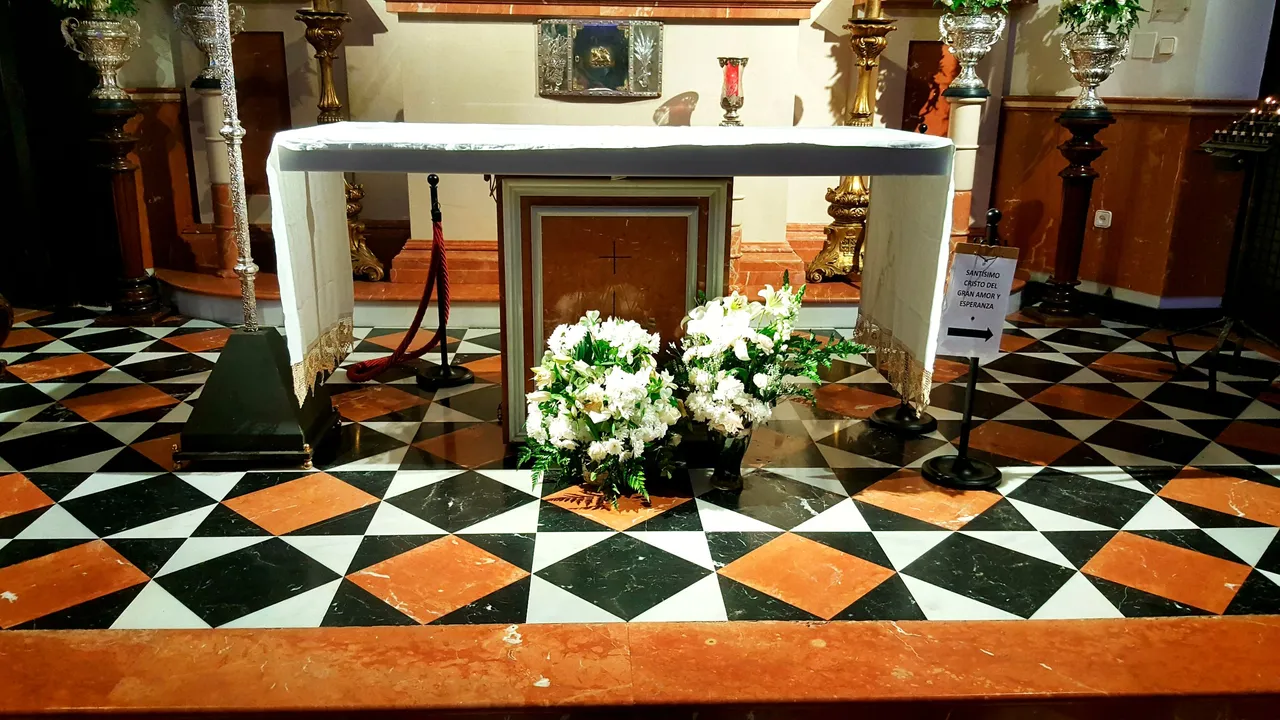
The floor of the altar and the altar itself are very old, but they are very well preserved thanks to the restoration work.
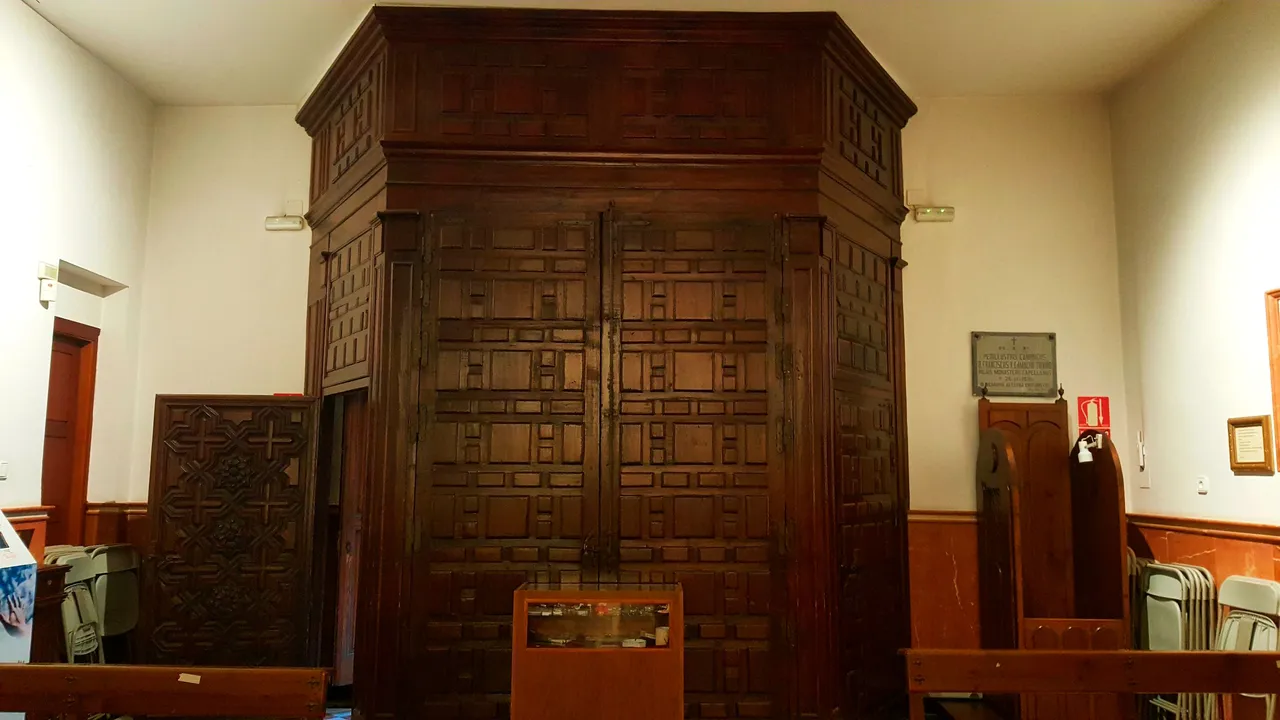

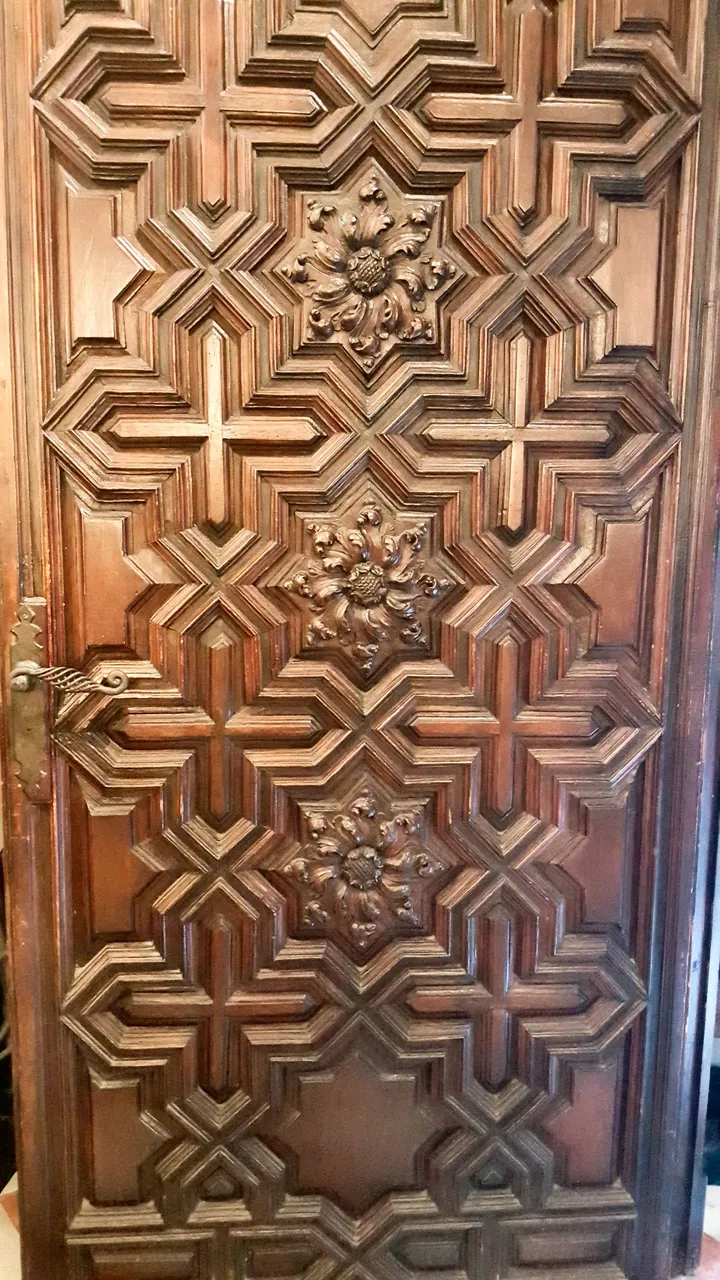
As I turn around, I can see the beauty of both the carved wooden entrance and the stained glass window that allows the light to pass through very delicately.
I think one of the most important things about this abbey is that the remains of the artist Pedro de Mena are buried here. His relationship with the abbey comes from several reasons.
He lived near the abbey and where he had his studio is nowadays the Revello del Toro Museum. Besides the amount of works of art he has made.
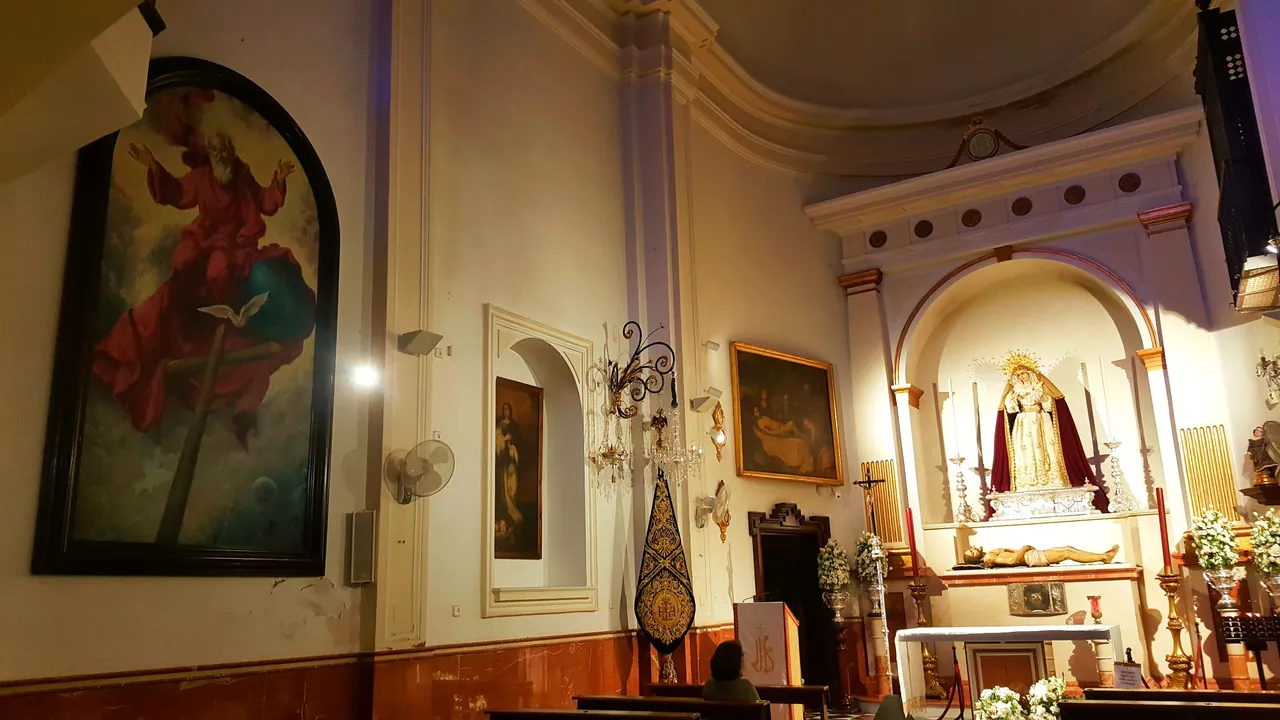
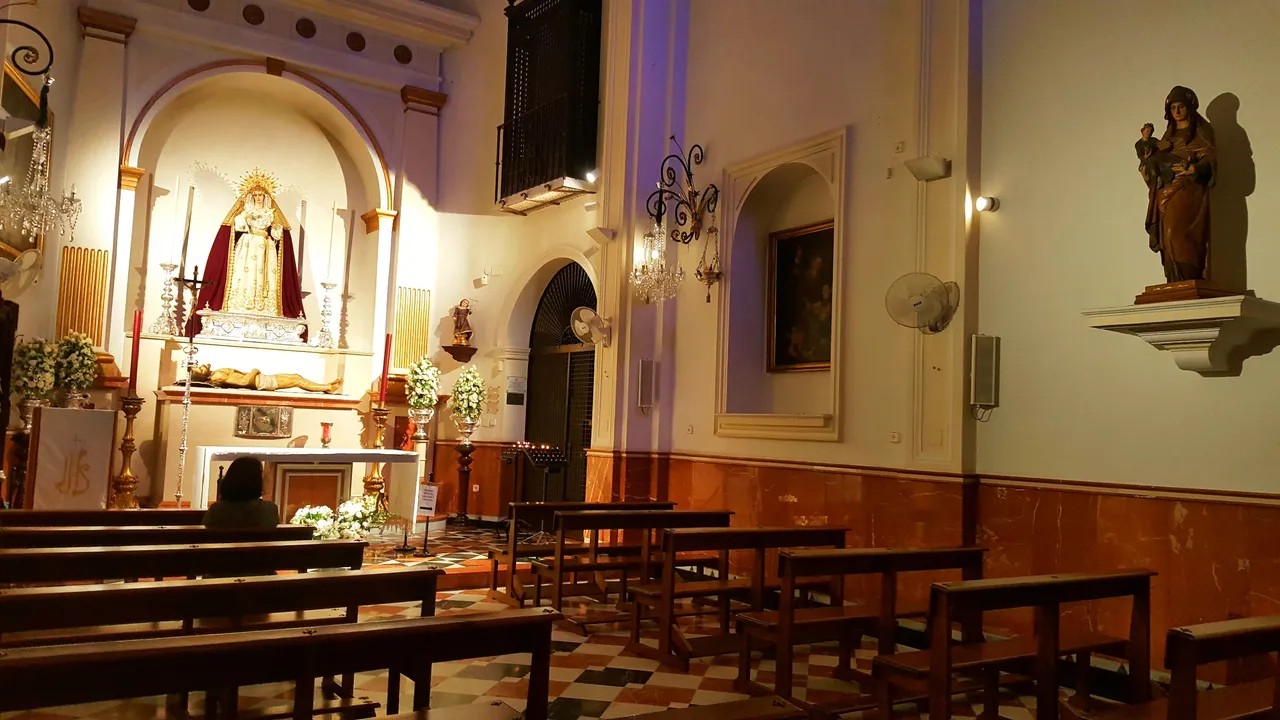
On the other hand, two of his daughters joined the convent as mojas, they belonged to the choir and also did art work.
Mena's remains were buried there in 1688 but were lost for a time when the abbey was moved until they were rediscovered and placed at the entrance to the abbey in 1996. This was Mena's wish because of his humble condition.
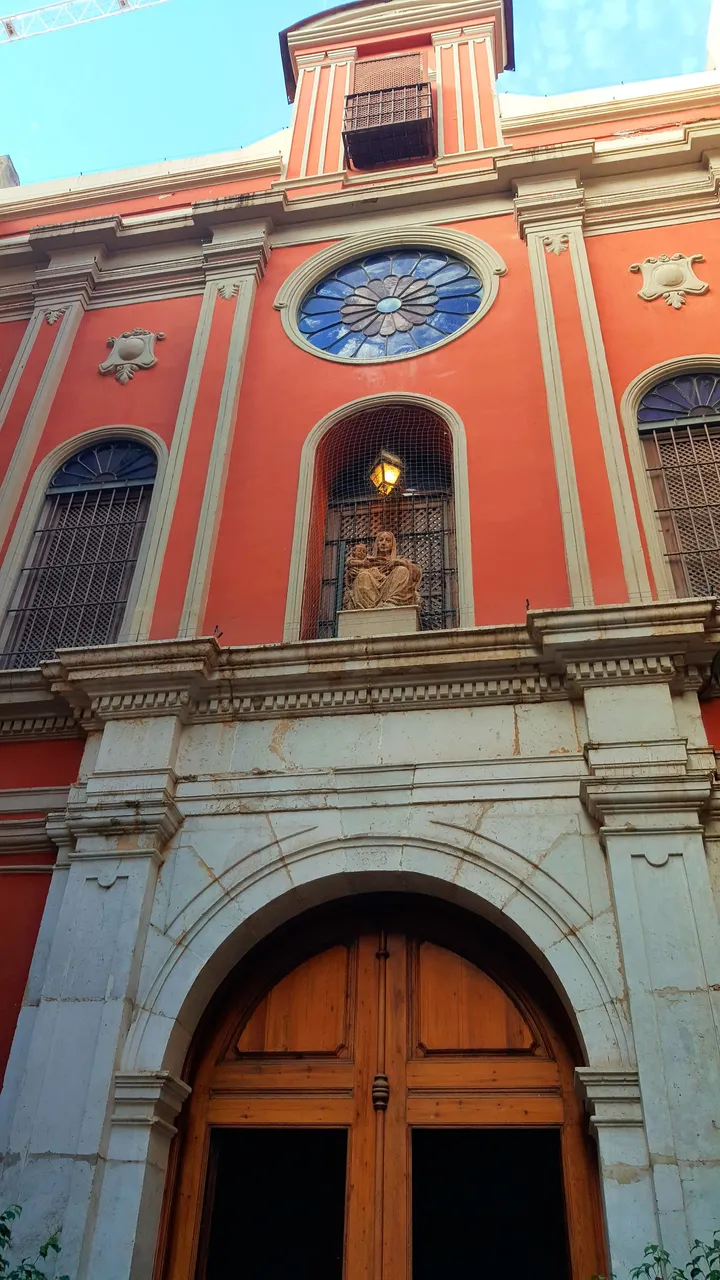
This I think highlights, above all, this story, the simplicity and history of this beautiful, albeit small church.
Thank you all very much for watching and reading this far, best regards and see you next time.
Amonet.

Separators created by me in Photoshop.
Used translator Deepl.com free version.
[//]:# (!pinmapple 36.72082 lat -4.41791 long Santa Ana Abbey - A hidden relic 📷 Malaga - Spain d3scr)

